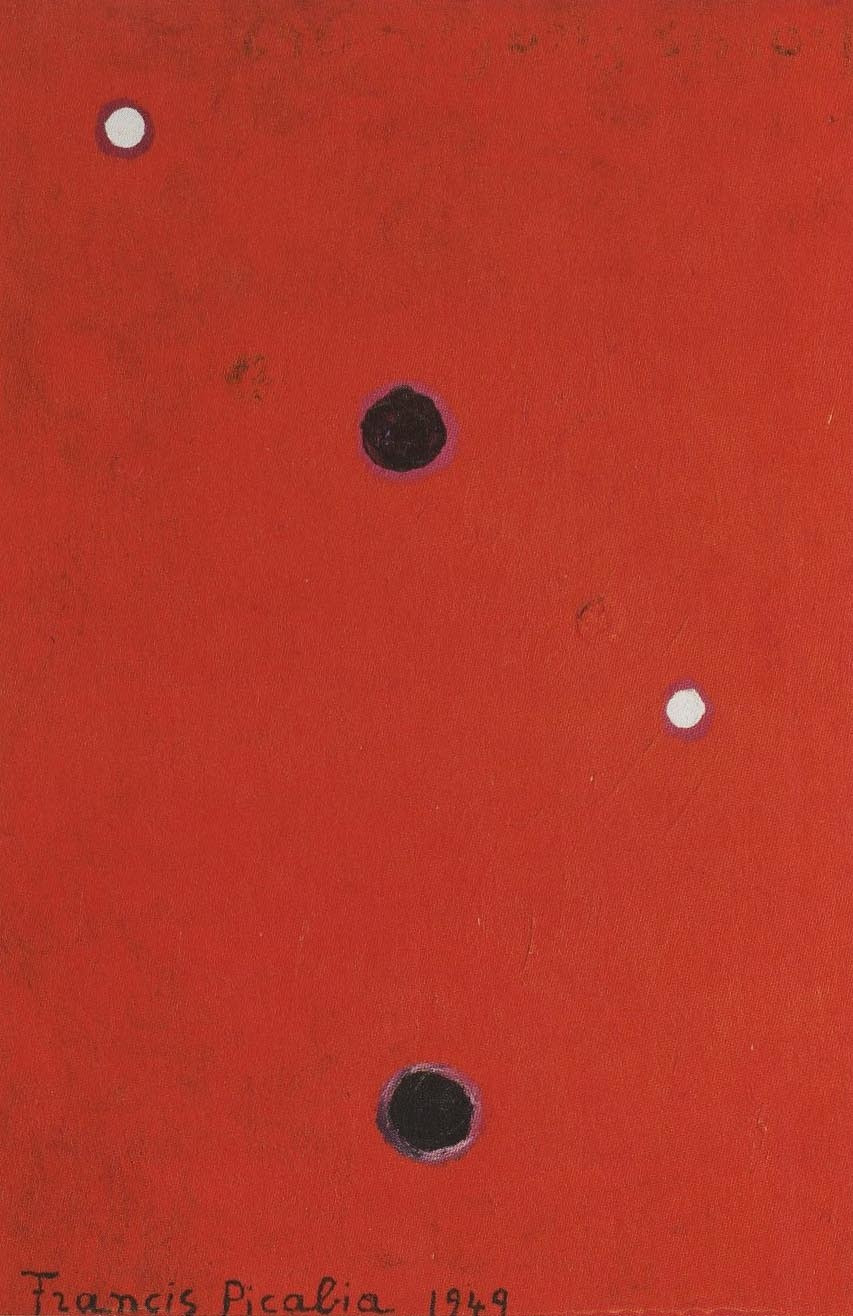Anne Umland: Here you see Picabia making yet another sort of painting. This time, it's a work that includes nothing but dots.
Narrator: Picabia was always changing the way he made art, and the things he painted. From far away, this painting might look simple. But if you look closely, you’ll see that Picabia did something special with the colors. He wanted you to really pay attention to the dots, so he added different colored rings around them so they'd stand out.
Picabia changed his mind as he was painting. Along the bottom you can see where he signed his name in black. But look up along the top edge. You might find traces of another signature, but it’s upside down!
When Picabia made these dot paintings he was seventy years old. Think about all the artworks by Picabia you’ve seen, and how many ways he re-invented himself over the years.
Talia Kwartler: If there's anything that you take away from this exhibition, I would want it to be the idea that an artist can be anything, that an artist can make anything, an artist can make paintings, an artist can make sculptures, they can perform. they can publish different books or journals.
Picabia reminds you that an artist can do anything that they call art. You can make jokes, you can be serious. You can be playful, you can be spontaneous. Art can be anything but also the artist can be anyone. And you don't have to be any one individual thing. You can be all that you want at the same time.
